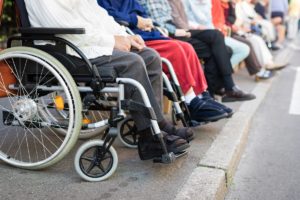Why fall risks in nursing homes shouldn’t be ignored
Posted in Health & Wellness on August 22, 2018
 Falls at nursing homes and retirement homes are a real safety concern.
Falls at nursing homes and retirement homes are a real safety concern.
Many nursing home residents are in the facility because of decreased mobility. Many are no longer able to walk or even stand on their own. Falling is a real possibility, and can have devastating effects.
For a younger person, a fall is not usually not a life-threatening incident. For an elderly person, a fall can be much more serious. The resident may suffer painful bruises, cuts or broken bones. The results of the fall can affect the individual’s mobility and daily life. Serious falls can result in hospitalization or the death of a resident.
Nursing homes have a responsibility to ensure that residents are kept safe. For residents who are prone to falls, this means taking measures to prevent falls.
When a new resident arrives at a nursing home, the facility should perform a fall assessment. The resident should continue to be assessed periodically in the future.
Nursing home facilities should take proper steps to ensure that residents don’t fall. When the facility fails to do so and a resident falls and gets injured, the facility can be held responsible.
The CDC has initiated its STEADI program (Stopping Elderly Accidents, Deaths & Injuries) which aims to decrease falls among the elderly. The Ohio Department of Aging’s Steady U Ohio program is a government-supported program that aims to prevent falls.
Although not every fall in a nursing home is due to neglect or irresponsibility, facilities have a responsibility to keep residents safe.
Free consultation: If a loved one has been injured in a nursing home, talk to a nursing home neglect attorney about your family’s legal options. Call 1-800-ELK-OHIO.